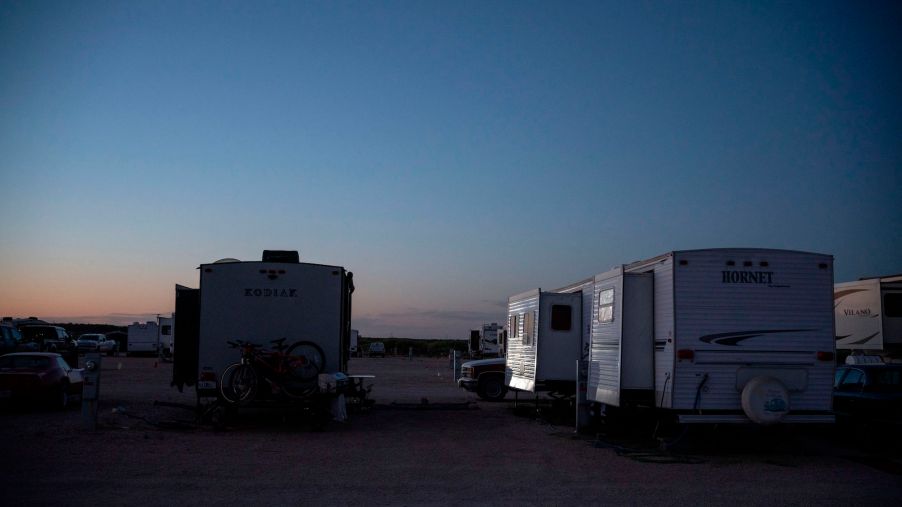
Financing a New RV Is a Worse Investment Than a Regular Car
With the pandemic affecting people’s lives in many ways, many people’s summer vacations have looked different this year. There has been an increased interest in RVs, with higher sales and rentals of RVs this summer. According to the RV Industry Association, RV shipments were up 53.5 percent for this July over July 2019. That’s the highest number in 40 years. But, if you’re thinking of joining the crowd, you should know that buying a new model is an investment in fun but not a good financial investment overall.
How financing a new RV works
A new RV usually costs between $10,000 and $300,000 but could go up to a million dollars, according to Credit Karma, making it a substantial purchase. People who aren’t able to pay the full price of their RV upfront often get an RV loan to finance the purchase. An RV loan works in basically similar ways to a car loan, where the borrower gets the money from an organization and agrees to repay the money plus interest over a set period of time.
The organization that owns the loan, a bank, credit union, or other lender, is the lienholder. A loan agreement spells out the loan term (how long the loan lasts), the annual percentage rate (APR), and the amount of the monthly payments.
As with home mortgages and auto loans, it’s recommended to check with multiple lenders rather than just accepting one from the RV dealer in order to make sure the loan agreement is as good as possible. The fees, term, or interest rate differ in different loan offers. Financing through the dealership is usually the fastest way, although the rates are often higher. It is also possible to purchase using a personal loan. This type of loan is unsecured, but it does usually have higher rates and shorter terms.
How an RV loan is similar to and different from an auto loan
Qualifying for an RV loan can be more difficult than getting an auto loan. It is possible to get an RV loan with less-than-perfect credit, but having limited debt and good income will be important. Increasing the amount of the down payment can also improve a buyer’s odds of being approved for a loan since less money would need to be borrowed.
Like a home mortgage and a car loan, most RV loans are also secured loans. That means that the recreational vehicle serves as collateral for the loan and can be repossessed by the lienholder if the borrower fails to make payments. Sometimes an unsecured RV loan is available. These loans are riskier for the lender since the RV can’t be repossessed, so the rates are usually higher.
Smaller RV loans might have a two- or three-year term, but many last for 10 years. Even larger loans may have a 20-year term. Since they’re often more expensive than cars, loan terms tend to be longer than auto loan terms. The longer loan terms can make the loan very expensive, with many years of interest payments, but the monthly payments end up being lower.
New models are a bad (but fun) investment
One issue with recreational vehicles is that they depreciate very quickly. During the first year of ownership, a new model could lose 20 percent to 30 percent of its value. Of course, that also means that buying a used RV could provide substantial savings.
The rapid depreciation means that, if the buyer sells the RV before the loan is repaid, the income from the sale might not cover the outstanding amount left on the loan. However, although an RV will lose value quickly, it can provide an excellent way to see the country and create the “at home on the road” lifestyle you imagined.


